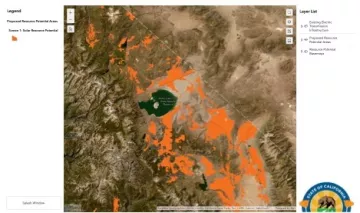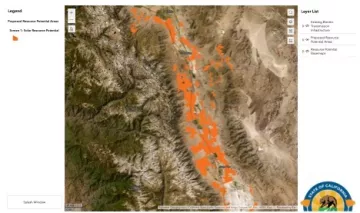California is making a serious effort to reach 100% renewable energy by 2045 in order to lessen the impact of climate change and it is making progress1. The state has upgraded its building code, is expanding its electric vehicle infrastructure, and much more. Now the state is planning where transmission lines and substations will be needed for future large-scale renewable energy projects. The Nature Conservancy has calculated that we will need to dedicate 1.6 million acres or more to renewable energy2.
Time is a factor. We need to rein in our carbon emissions quickly. The planet is already at 1 degree Celsius (1.9o F) over pre-industrial levels. Rooftop solar is increasing faster than the state anticipated, but companies can provide more power, more quickly and cheaper, through large-scale projects and generate the electricity we need. Large-scale renewable energy projects need powerlines and substations to deliver the power to where it is needed. While many of us would like to see rooftops, parking lots, brownfields, and small-scale solar be maximized first, before destroying natural habitats, the California Public Utilities Commission (CPUC) is paving the way for large-scale renewable energy projects.
Mono County Potential Solar Impact:

Inyo County Potential Solar Impact:

How many large scale renewable energy projects do we need and if so, where should they go? The California Energy Commission (CEC) released a map of California showing where large-scale solar and wind sites might be developed that would avoid areas with high conservation values. Environmental NGOs have been asking the state to figure out what areas would not be appropriate for renewable energy projects and to work that into the planning process. The Sierra Club supports the state’s effort to transition to renewable energy, but it also wants to minimize the loss of nature and wildlife by siting projects in locations that will have the least impact on communities and the environment.
The CEC has produced a map of areas that could be sites for renewable energy projects. It excludes areas based on various criteria. Our job, as the public, is to see if we could live with what is being proposed and if there are valid reasons for excluding more areas. Are any of the proposed areas in the Eastern Sierra that are not right sited?
- Is a site going to be effective? Is it the right location to capture a day’s worth of sunlight or does the wind blow there? Will it be buried under snow for many months? Is the site large enough for a large-scale project? These are the practical considerations.
- Should the Mono Lake National Scenic Area be excluded or the new Alabama Hills National Scenic and Recreation Areas?
- Should the solar array be on the shores of a lake on a bird migration path? Can we find a better location so birds don’t crash into the panels and die thinking it is a lake?
- Should we give up some or all of the federal or LADWP pasture land that is grazed? It might put an end to ranching in the Eastern Sierra. Should it override conservation easements and other legal agreements?
- Should all of the possible renewable energy sites in the Eastern Sierra be developed or should there be a cap? How much can be covered in solar panels before it impacts recreation and tourism here?
- Is it worth forcing a species to go extinct?
For those of you who think the Sierra Club is extreme in identifying some areas as better than others for solar or wind development, I ask you to think of your favorite place outdoors. Is that the next place you’d recommend be covered in windmills or solar panels in all of the state? You can’t think of any other location that would be better? Wouldn’t it be better to put panels at the old Vons shopping center in Bishop or over the LA Aqueduct before destroying our grazing pastures, meadows, and wetlands? I personally think large-scale solar is not appropriate for the Eastern Sierra and would like to see more parking lots and rooftops covered in solar before we start paving paradise.
By: Lynn Boulton